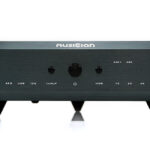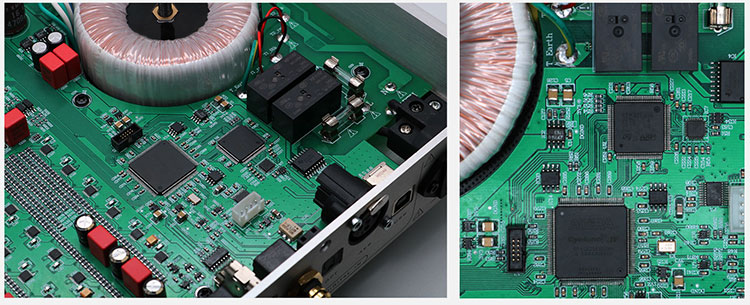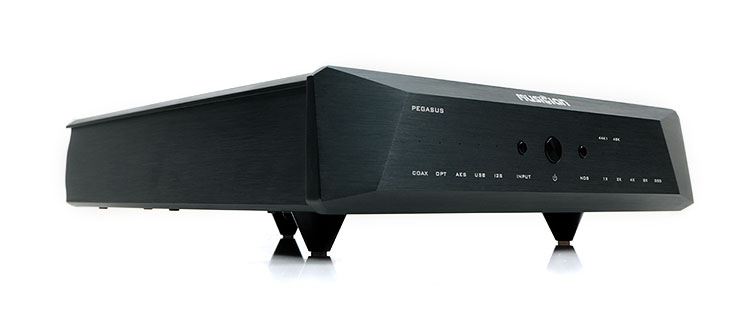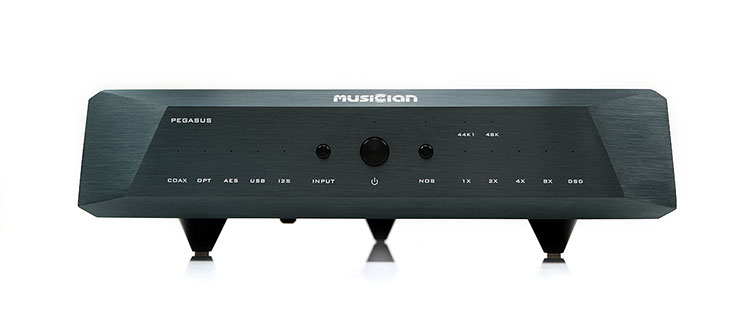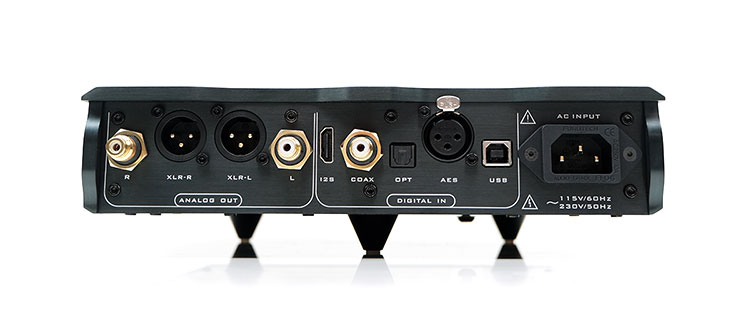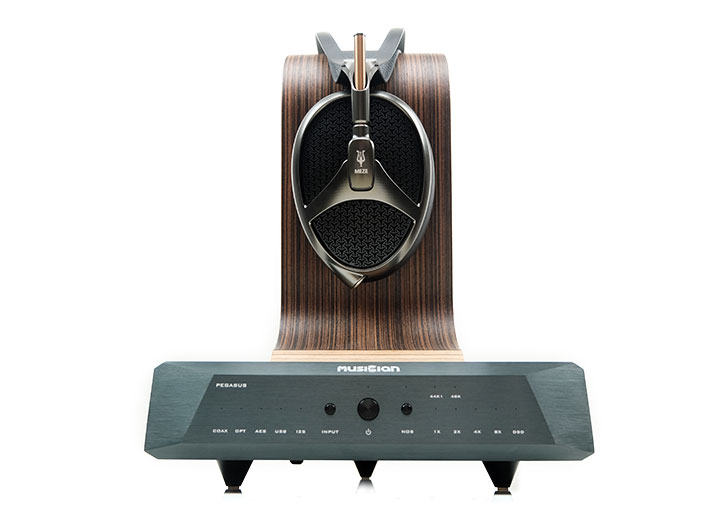The Musician Audio Pegasus R2R DAC is a debut DAC featuring a 24BIT R2R and 6BIT DSD true balanced topology capable of up to DSD1024 decoding. It is priced at $1099.
Disclaimer: The Musician Audio Pegasus R2R DAC was sent to us as a sample in exchange for our honest opinion in this review. We thank Aosihda for this opportunity.
To learn more about Aoshida supplied products reviewed on Headfonics you can click here.
Note, this review follows our new scoring guidelines for 2021 which you can read up on here.
This is not my first R2R experience, doubtless, it will be our last as some of our team are working on bringing some other DAC’s to the review table.
We recently reviewed the high-end Luxury & Precision P6 DAP, (and the Pro version). The P6 uses a pure R2R DAC topology, albeit in a portable format so without a lot of the extensive connectivity you associate with desktop options. But it does have a line-out and it can work with a desktop amplifier as an R2R DAC with a 4.9Vrms/3.1Vrms switchable design.
The Musician Audio Pegasus is our second R2R DAC but this time it’s the full desktop experience with all the associated bell and whistles for full system integration.
Musician Audio hail from China which seems a mecca for R2R creations these days and are very new to the scene as a company but claim to have some significant engineering pedigree in their team to back up their products.
The Pegasus R2R DAC is their debut audio product and in fact, their only product to date and competitively priced at $1099 for a modern R2R DAC.
There are cheaper at around $799 with the Denafrips Ares II which sadly, we do not have here to compare, but there are vastly more expensive such as the hugely praised Holo Audio DAC range that can climb to $5000.
R2R
Now for those new to R2R, this is an entirely different approach to your traditional delta-sigma single DAC chipset implementation. Examples of which include Topping’s D90 or partially Burson’s Composer 3X Performance with their mix of Sabre or AKM chipsets.
I say partially because some of the Burson DAC chipset functionality such as I/V has been pushed to their rollable opamps for greater control on the sound signature. Beyond the initial FPGA DSP and oscillation controllers, the core functionality is more or less the same.
Both delta-sigma options deliver excellent but different listening experiences but from an engineering angle, going discrete with R2R means you are 100% in control of the implementation. Delta-Sigma is traditionally an all-in-one solution, a jack-in-the-box design to take a lot of the legwork from a company’s R’n’D budgets and reduce costs.
Parameters for delta-sigma adjustment are usually limited until you get to the analog side where opamps, rollable or otherwise, can take up the slack and introduce whatever flavor you like to the sound. Some, like Burson Audio, go a little further by diverting some delta-sigma duties such as I/V to discrete opamps which is more of a hybrid solution.
Inside the Pegasus
The Pegasus is a standalone desktop pure DAC with fixed voltage single-ended and balanced analog outputs and an array of modern digital inputs. There is no internal pre-amp so no variable voltage or volume adjustment. All volume control is done via your dedicated external amplifier of choice.
Inside you have discrete balanced 24BIT ladder rail implementation for core R2R native 1BIT PCM decoding and then a separate ladder for decoding DSD (6BIT). Behind that, you have an Altera Cyclone IV FPGA implementation combined with a FEMTO Crystal oscillation for DSP and jitter control.
Discrete means a ton of tiny resistors all individually mapped out with specific engineering requested processing parameters to convert the digital signal to analog in the exact way Musician Audio wants it to be done.
It is more time consuming than delta-sigma but the offshoot is generally always a more natural sound that is free of artifacts or ringing, especially in the higher frequencies.
The drawback is that the high number of resistors required to deliver which means a physical challenge in PCB engineering. Simply put, it’s a lot harder to fit 100’s of them accurately onto a board compared to a single delta-sigma chipset. Not just any resistor, but those with precisely matching parameters so that one of them does not become the entire DACs weakest link.
Decoding
I am guessing Musician Audio wants the Pegasus to have a long product cycle because the decoding future-proofing on this unit is spectacular at up to 32BIT 1536kHz for PCM decoding and DSD1024 compatibility via I2S and USB. That covers absolutely everything commercially available on the market except MQA.
Every other input is also pretty much maxed out to its designed capability so that means 24BIT/192k PCM and DSD64-DoP for its coaxial and optical inputs.
The reason why the USB has quite a significant jump over even the Chord Qutest’s excellent DSD512 and PCM 32BIT/768kHz decoding capability lies in the choice of USB stage and the accompanying software.
From what I am aware, Musician Audio does not use something like the ubiquitous USB XMOS stage, but rather their own custom design solution tied to an STMicroelectronics ARM Cortex-M4-based STM32F446 processor. Hence, the relatively uncommon but very much welcome high future-proofing at this price point.
Design
The Pegasus R2R DAC comes in two color finishes, this brushed black tinged with green you see in the pics and a lighter traditional silver option. Both look good so it just depends on your preferences for system matching.
The chassis paneling is a robust aluminum alloy with discrete locking screws to the rear and despite the aggressive front panel design, the curving is not terribly sharp so no nasty surprises for your hands when lifting. Speaking of which, the Pegasus is deceptively heavy for its size at 3.9Kg.
The form factor of the Pegasus is relatively slimline at just 50mm tall and long at 280mm deep with an angular front panel and an unusual curved rear finish on the top plate that slightly overhangs. That sleek front panel finish sort of reminds me of a slightly more robust and heavier NuPrime design, particularly the DAC-9 only without the volume controls.
Controls
Everything you need to control the Pegasus DAC is housed on the front panel and there are some pros and cons to that. On the pro side, it is quite easy to understand with a central power switch and an input and NOS button on either side.
The input control is self-explanatory with a row of options you can rotate through in sequential order and a small red LED diode above that lights up when the option is selected. Options include coaxial, optical, AES, USB, and I2S.
The NOS on the right side is the Pegasus’s upsampling feature, (see more below) and here the thinking is a bit back to front but you get used to it. With the NOS light on, the upsampling feature is turned off, and with the light turned off the NOS feature is on. The default is turned off, therefore the Pegasus R2R DAC oversamples by default. Still with me?
The cons of this control system are 2-fold. The first is the size of the labeling on the DAC. It is tiny, barely legible for my tired eyes but younger eyes might have more success. The low power of the LED indicators is a bonus for lights out in a cinematic setup but for regular audio racks, it could do with a bit more luminous power.
The final con is a lack of remote control. That would have been ideal, especially if you are using this in a large room HiFi set up and you have a number of sources you switch through or want to turn the NOS on and off.
I/O
All inputs and outputs on the Pegasus are neatly housed at the rear. This includes an analog output section to the far left and digital inputs in the middle. To the far right, you get a multi-voltage 3-prong Furutech power socket connected to a single shielded toroidal transformer.
Digital inputs include I2S, coaxial, optical, AES, and USB whereas the analog out is a fixed voltage balanced and SE configuration. The 3-prong XLR balanced outputs are rated for 4.4Vrms and the SE RCA outputs on either side are rated at a standard 2.2Vrms.
As mentioned, there is no variable voltage capability or pre-amp inside the Pegasus but do note the output resistance of the analog sockets are rated quite a bit high at 625Ω SE and 1250Ω balanced. This might mean a slight diminution on your amps volume settings depending on your amps input rating.
A couple of slight negative points and they are relatively minor. The top plate overhang feels counterintuitive to easy connecting of the balanced analog XLR sockets as they get in the way slightly. The second, and it is purely OCD, but I do wish the 3 beautiful gold-plated ring nuts on the RCA and coaxial connectors were visually aligned.
Packaging & Accessories
The packaging is functional, medium-sized, well protected, and glossy blue in its finishing. Nothing extravagant but then again, most amplifiers rarely do come in anything over the top, unlike headphones and earphones. Protection is the name of the game and the Pegasus R2R DAC packaging does just that.
Inside everything is protected with thick layers of black packing foam with a manual and warranty card on top and your ‘kettle plug’ terminated power cable to the side.
I would have loved to have seen some basic connection cables to get up and running such as a set of dual RCA SE cables or a USB-B to USB-A cable but considering these are usually cheap $5 ones a simple trip to your local electrical store will sort that out.
Sound Impressions
Summary
If you are used to a typical delta-sigma DAC sound signature, then switching to an R2R DAC will give you a very different experience. Not every R2R is the same and you can read more about that in our comparisons on page 2.
However, what I can tell you is that the general tone of the Pegasus faithfully follows the ‘R2R’ signature sound as I know it. For me, that is a very natural quality to its instrumental and vocal timbre and a highly engaging level of detail within its texture.
Importantly, the Pegasus has what I also like to refer to as a ‘lack of delta-sigma shine’ in the way it resolves every note struck and every detail pushed forward. Now that does not mean bright, but rather the notes have a bit more character, sounding ‘gritty’ and involving from attack through the sustain, and onto the way the decay resolves.
With delta-sigma DACs such as the Chord Qutest, you get a digital interpretation which is normally crazy good on articulation and heavy on complexity. However, at the same time, you often get a feeling that the ‘moment’ passes you by so quickly and you are onto the next note, and the next note, and so forth. It can be exhausting, in a good way.
With the Pegasus, much like the Luxury & Precision P6 DAP, which is also a discrete R2R implementation, each note sounds like an ‘event’, hitting with some awesome solidity and dynamic presence. There is less of an emphasis on the surrounding wall of spatial cues dancing around you and more of a determined focus on how each note unfolds and what it offers.
You could argue that there is an almost analog-type quality to performances except the Pegasus resolves so much better than something from a bygone era. Perhaps that what makes the Pegasus so unique.
Timbre
Out of the Box
There is coloration but not as much as I expected there to be with the euphonic and SET-like LP P6 USB-DAC sound still fresh in my mind. Here, I offer a word of caution and that is let the Pegasus flow or keep it turned on for a few days when fresh out of the box. It does take time to settle into its groove.
If you are impatient you might find a sound that is a little harsh on the top end with a treble performance not short of the odd harmonic dissonance here and there creeping into the upper mids of any solid-state and reference headphone pairing. It can be unsettling to all but the most ardent treble enthusiasts.
Post-Burn-in
After plenty of hours keeping it warm, the Pegasus offers a full-bodied but also a very balanced tonal charm to solid-state high-end performing amps and a meaty performance out of my more mid-centric amps such as the Auris HA-2SE.
I suspect there is a very slight fade into the treble which is a little more pronounced in NOS mode than OS mode combined with a low-end slightly north of neutral. That delicate treble fade plays a major role in pulling your listening focus just ever so slightly into a very vivid sounding lower treble and upper mids presence.
And yet, the percussion timbre is not splashy whatsoever. I hear every cymbal crash and bell clatter coming across clear as day with tons of textural detail but with the perfect attack and decay balance.
Life-like but life-like in a slightly pleasing manner. Slightly even-harmonic biased? Possibly, but only marginally so and just enough to give most instruments some heft and warmth for a very listenable quality.
Oh, and vocals. Goodness me almost perfect for my tastes sounding slightly forward with some gorgeous body and a confident handling of any natural occurring sibilance. That applies to both male and female vocals by the way.
Staging
Of course, the final say will be with your chosen headphones and an analog amplifier but I do encourage you to pair the Pegasus R2R DAC with a system that can maximize the excellent staging qualities of the Pegasus.
This is a performance that is not so much about treble intensity designed to leave you with an impression of superb extension. If you need a terrific top-end treble sparkle I suggest the Chord Qutest which excels at this. The Pegasus headroom is excellent with plenty of air and separation but errs more to the natural side in terms of treble forwardness.
Neither is the Pegasus about delivering absolute depth and sheer rumble, for that I would suggest the Little Dot DAC 7, (review coming soon), but you can tweak out some killer bass with the right amp such as the Violectric V281if that is what you want.
What the Pegasus has is stellar control and placement from top to bottom to create a very strong sense of open space, especially in terms of width where our paired amp and headphones would allow it.
With the D8000 Pro and the Xi Audio Formula S analog amp, the Pegasus sounded huge but also very clear and importantly, without any loss of that signature robust or solid midrange presence.
Click on page 2 below for pairings & select comparisons


